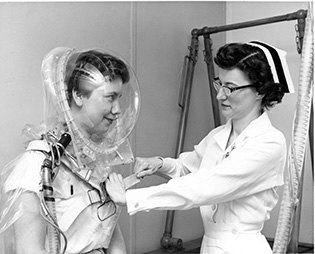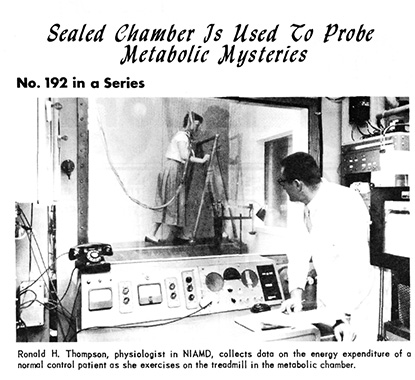From the Annals of NIH History
Probing Metabolic Mysteries in the 1950s

To penetrate into the deeper mysteries of metabolism, [NIH] scientists…have begun using a [temperature- and humidity-controlled] sealed chamber to collect metabolic and physiologic data related to the energy expenditure of research patients. This “metabolic chamber” makes possible the study of the body’s utilization of air, food, and water under a variety of controlled living conditions. The patient…can comfortably remain in the chamber for several days [and] eats and drinks precisely measured amounts of food and liquids. By the use of a plastic hood [shown on the patient volunteer], the composition of the air breathed is controlled, and the expired air, as well as other body wastes, is captured and analyzed. A light, flexible cable, which includes a two-way communication system, is attached to the helmet and transmits minute-to-minute changes in the patterns of metabolism. This information is recorded by complex instruments in another room. While in the chamber, the patient has all the comforts of home except for his confinement to a space of 9 by 13 feet [while] every breath and heartbeat is being recorded and measured electronically.

To learn about the current-day Metabolic Clinical Research Unit at NIH, go to bit.ly/2fsDfkg.
This page was last updated on Tuesday, April 12, 2022
